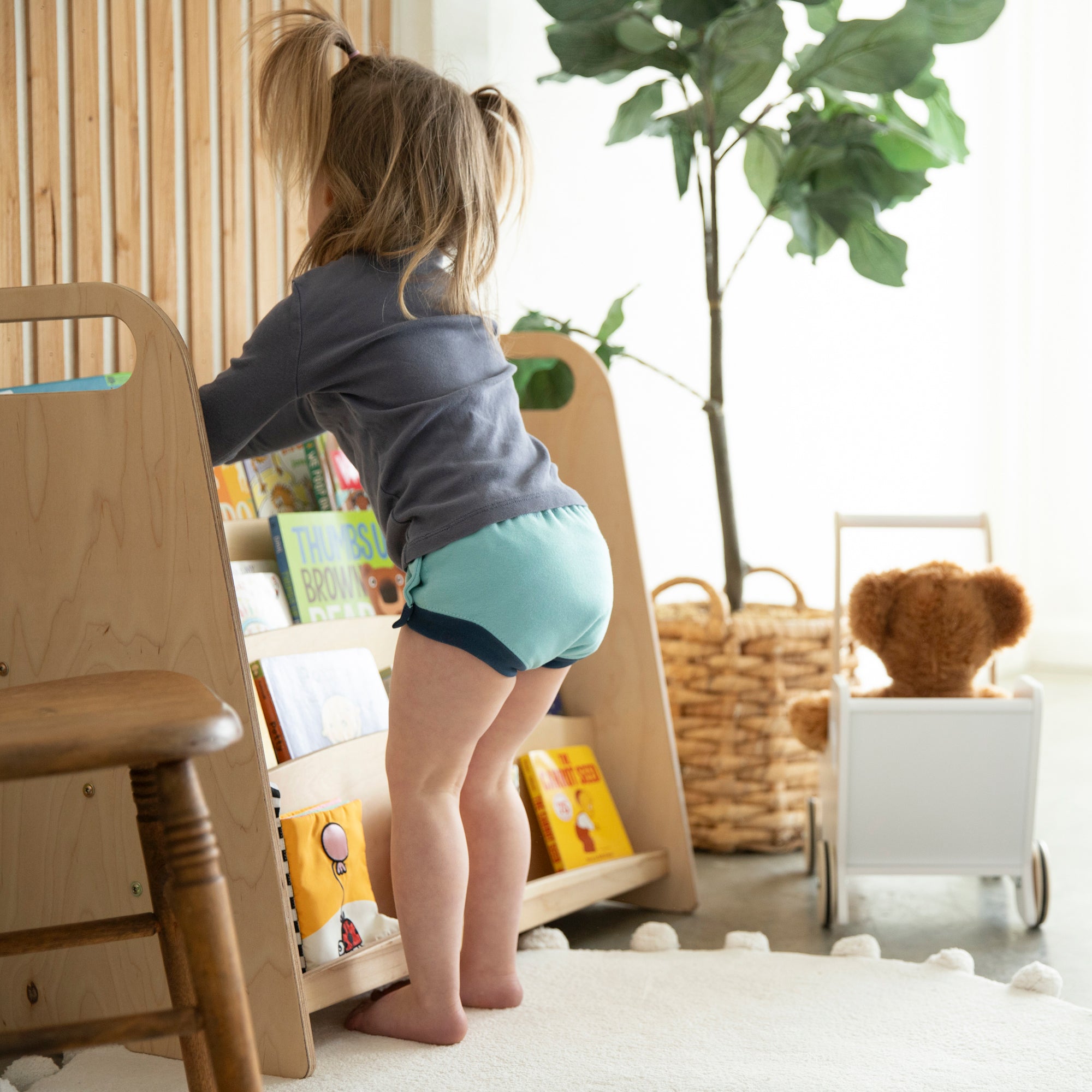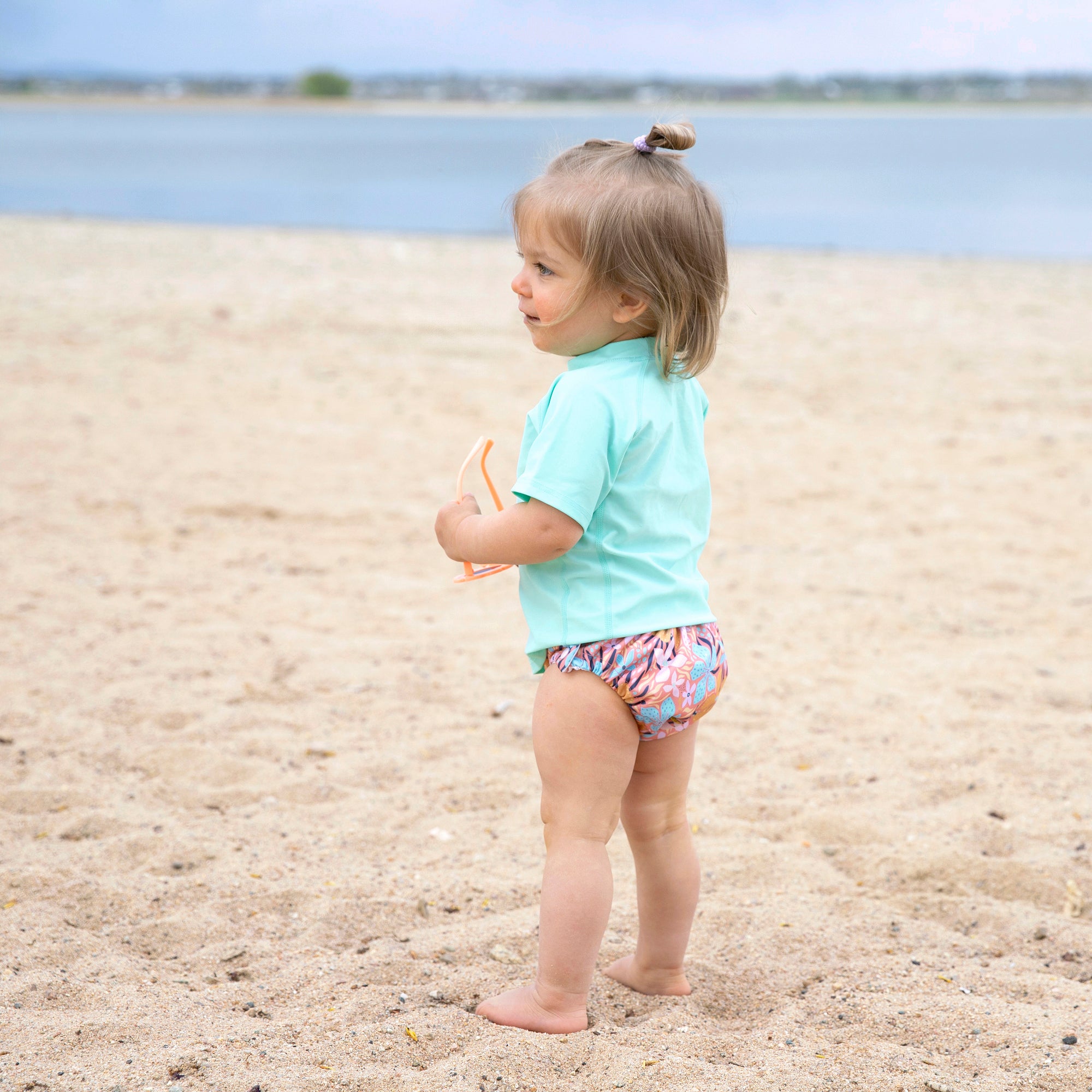Basics of Newborn Cloth For some, it’s a tough decision to figure out if is worth it to cloth diaper your newborn child. There are lots of pros and cons to consider, for sure. Is it more financially viable to do disposables or cloth diapers? Will I need to get a set of cloth diapers just for tiny newborn legs in addition to one for when she grows a bit? And one of the very most often asked questions: how many diapers will I need?? Today, we’re sharing some great information from a recent #ThirstiesLive that will help in your decision-making.
So, how is cloth diapering a newborn different from diapering an older baby? If you’ve cloth diapered an older baby or are just looking into cloth diapering, odds are you’ve been doing some research. But, while a lot of the information out there about cloth diapering is relevant to all ages, there are some facts that will help you understand a bit more about the differences in cloth diapering a newborn. For example, there’s sizing to consider. One-size diapers typically don’t fit well until a baby reaches the 10 pound mark. Along these lines, with how skinny a newborn’s legs generally are, you’ll probably need to pull the wings of the diaper up to baby’s waist to get rid of any leg gaps. Also, it’s important to remember to allow room for baby’s umbilical cord to heal. Then there’s the number of diaper changes you can expect. Since newborns go to the bathroom quite frequently, some consider cloth diapers a big plus - it means that there won’t be any middle of the night runs to the store for diapers when you unexpectedly run out. If you’re exclusively breastfeeding, your newborn’s poo is considered water soluble so there’s no need to worry about spraying newborn cloth before tossing it in the wash. Speaking of poo, newborns are notoriously runny in this department, so many can expect blowouts...except in cloth! (Of course, if you’re still figuring out how to fit the diapers, you may have some leaks, but once it’s figured out this shouldn’t be an issue.) You may never have to experience one of those up-the-back poop explosions. A good tip is to consider prefolds that you can fasten since the jelly roll fold is GREAT paired with Thirsties’ amazing double gussets (or the awesome AIO leg elastics if you’re considering these) are all great at containing newborn poo.
What will you need to cloth diaper your newborn? (Washing every other day) Since, as mentioned above, newborns eliminate A LOT, you’ll want enough diapers for at least 24 changes and two wet bags (or a combination wet bag and pail liner) for storing your cloth diaper laundry. Here’s what this may look like:
Covers + Absorbent Interior: 8 Covers + 24 Prefolds or Stay-Dry Duo Inserts
All-in-Ones: 24 AIOs
Covers for Day/AIO at Night: 5 Covers + 15 Prefolds + 9 AIOs
Is a newborn stash worth the investment? Budget is hugely important when welcoming a new baby, and it’s also important to consider both the investment of money but also time and energy. As with many parenting decisions you’ll make, this is totally about personal preference. When it comes to the investment of money, if you plan on using your diapers on more than one child or you hope to resell your newborn stash, a newborn set of cloth diapers is worth the cost. Here are a few financial scenarios:
-
- Stash of 8 Duo Wraps + 24 inserts + 1 Wet Bag + Pail Liner = $306.50
- 24 Newborn All in One + 1 Wet Bag + 1 Pail Liner = $404.50
- Two months of “green” newborn diapers, figuring 10 diapers a day will cost $215 and there is no resale value or potential for using on a second kid.
When considering your investment of time and energy, many focus on the extra laundry, but if it becomes a part of your routine it really isn’t as scary or hard as you might expect. It may even sound weird, but many people find that stuffing diapers or folding their cloth is actually kind of a “zen” experience. Also consider that cloth diapering simply WORKS. There are little to no blowouts. Of course, it’s important to remember your reasons for cloth diapering overall. You don’t have to worry about what is touching your baby’s skin, you can feel good about making a green choice, and you’re ultimately saving money in the long run over using disposables. As we’ve mentioned here on this blog before, remember that cloth diapering doesn’t have to be all or nothing, either! I, myself, am a part-time cloth user and can still count myself proud knowing that every time I put a cloth diaper on my daughter’s bum, it’s one less disposable diaper that a) I have to buy and b) will end up in the landfill.
Are you a successful newborn cloth diaper parent? We’d love to hear about your experiences in the comments. Was it easier or harder than you expected?





